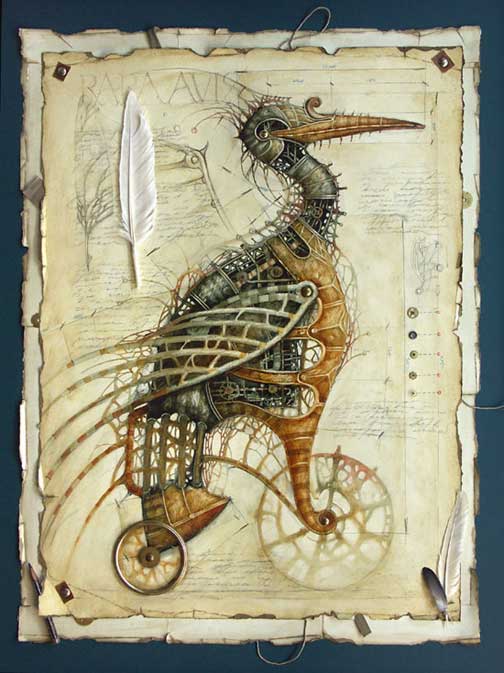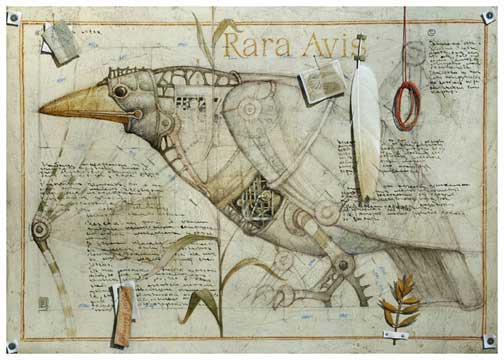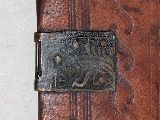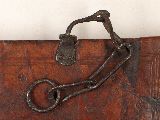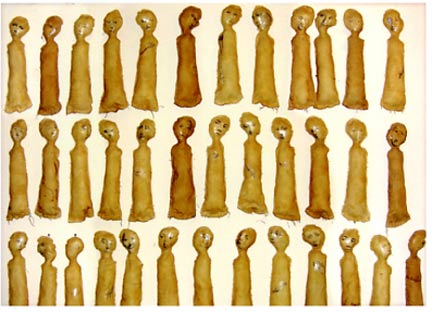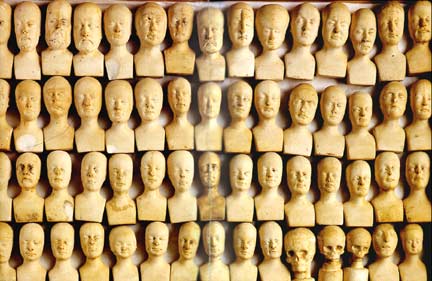An essential art/science website to bookmark, if you haven’t already: Universal Leonardo: Leonardo da Vinci online. The simulation of curatorial imaging techniques used to study the Lansdowne Madonna is nicely done, as are the overview of math and proportion in Leonardo’s work and the various interactive features.
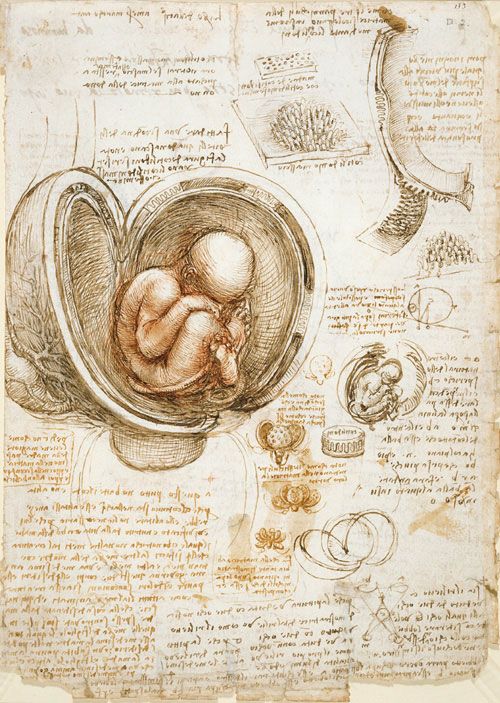
Leonardo’s notebooks always give me the impression of a vast, benevolent curiosity. This man was into absolutely everything, and his insights were prophetic – it’s no wonder he figures prominently in so much historical fiction and semi-fiction. (I really enjoyed the often silly Alias mythology, revolving around a pseudo-Leonardo called Rambaldi; the ubiquitous Da Vinci Code, not so much). Here’s Leonardo’s take on the anatomy of the womb and fetus – I especially appreciate his obvious fascination with the way the placenta adheres to the uterus.
I didn’t include this image in my post on anatomical models and illustrations because Leonardo’s private notebooks were not intended to be pedagogical. Also, Leonardo here makes an error shared by early anatomists like Galen: conflating features of animal anatomy with human anatomy. It was an error of necessity. Because Leonardo probably only had access to a single human fetus for dissection (he supposedly dissected between 10 and 30 cadavers over his lifetime), he supplemented his observations with studies of the more readily available cow uterus. Unfortunately, the prominent patches of finger-like cotyledons anchoring the placenta to the uterus – which so captured his attention in this leaf – are present in the bovine placenta, but not in the human.

